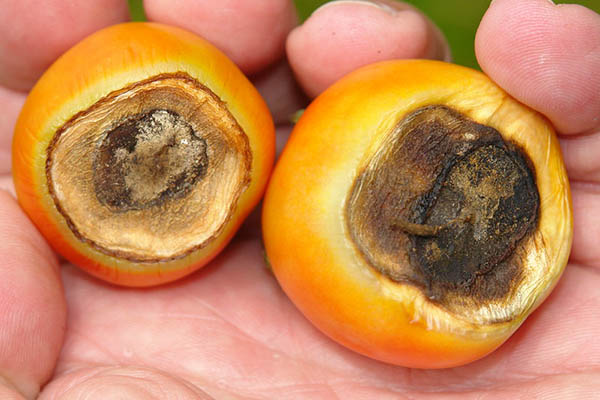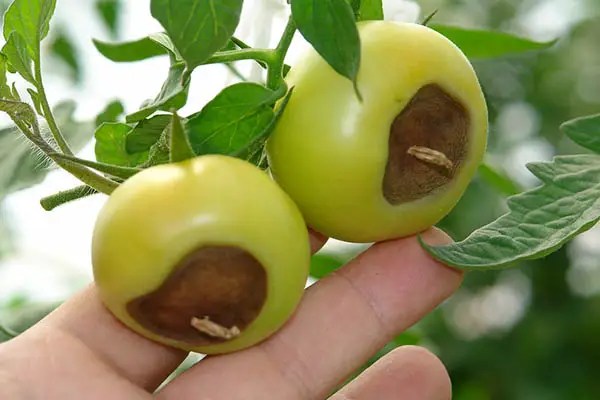If you’ve noticed dark brown, sunken patches at the end of your tomato, aubergine, cucumber or pepper, you are probably dealing with blossom end rot. Fortunately, this relatively common garden problem is preventable. Read on to get your info on blossom end rot causes, symptoms, prevention and control.

What is Blossom End Rot
Blossom end rot is a physiological disorder that results in dark brown areas at the end of the fruit where the blossom once was. It occurs on ripe fruit, but it can also affect young green ones. These brown patches gradually become larger and leather-like, leading to the fruit uselessness.
The good news is that blossom end rot is not a bacterial or fungal disease, but an environmental problem, so the problem won’t spread from one plant to another. The disorder occurs due to the calcium deficiency and the lack of water. Uneven watering is related to the calcium imbalance within the plant. The plant with calcium shortage can’t develop fruit properly and deals with many other growth problems.
Blossom end rot usually appears during the first stage of growth when unstable weather conditions during the beginning of season bring fluctuations in soil moisture. If the early season when the crop is planted is too wet and then suddenly becomes dry, there is a possibility of blossom end rot. This garden problem is common with aubergine, cucumber, pepper, squash, and melon, but gardeners are mostly troubled by the tomato blossom end rot.
Besides the calcium imbalance, there are other factors that may cause blossom end rot: too much nitrogen in the soil, salty or cold soil, soil pH imbalance or root damage. All these factors can be related to each other.

How to Prevent and Control Blossom End Rot
You can take several precaution measures in order to prevent blossom end rot. These include:
- If you live in cold climate regain, wait until the soil is warm enough to plant the crops that are susceptible to blossom end rot.
- Choose resistant varieties of crops.
- Provide the plant with regular, balanced moisture. If the weather is dry, be sure to water the plants regularly.
- Mulch the plants to keep the balanced moisture level. A layer of mulch can help plants to retain moisture, especially during warm summer days.
- Give your plants a proper nutritive balance. Feed them with calcium and phosphorus, and avoid nitrogen-based fertilizers. You can add calcium to the soil by applying a store-bought calcium solution or you can increase the level of calcium by using dolomitic or hydrated lime, gypsum (CaSO4), Ca salts, bone meal, crushed eggshell, or oyster shell. Sometimes the soil can be rich in calcium, but if other nutrients and salts like magnesium, potassium or ammonium are present in larger amounts, it can decrease calcium intake by the plants. Test your soil to know how to balance all these nutrients.
- Maintain a consistent soil level of 6.5 pH.
The prevention can decrease the chances for blossom end rot, but in most cases, the problem will disappear naturally as the season progress.